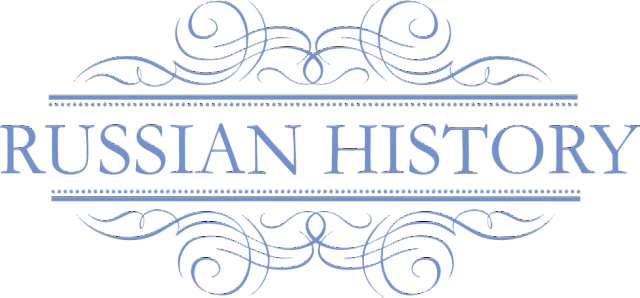19th Century in the Russian history
Three dramatic and far-reaching events took place in the 18th century which had consequences for the remainder of the century and beyond. These were Napoleon’s invasion, the Decembrist Revolt and the emancipation of the serfs. These events also inspired Russian authors and artists to create what became known as the Golden Age of Russian culture. The century also saw the Russian Empire expand into Finland, Poland, the Caucasus, Central Asia and the Far East and establish trading posts in Alaska and California.
Russian Expansion into the Caucasus
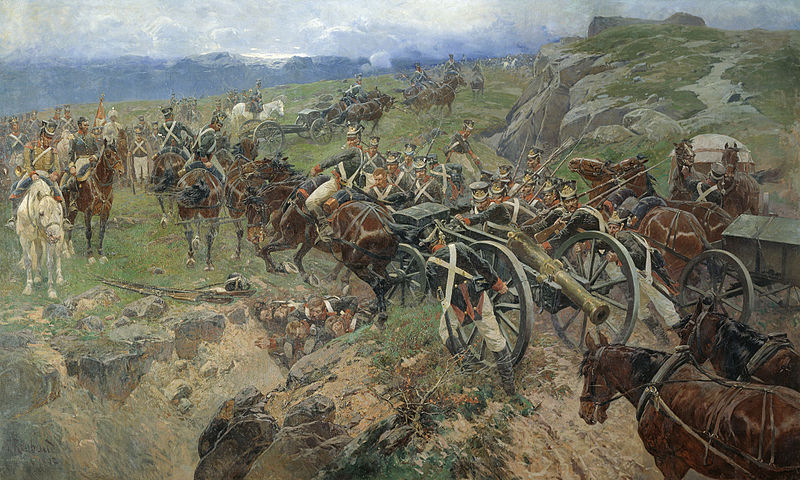
In 1801, following the death of King Giorgi XII of Kartli and Kakheti, Emperor Paul incorporated his part of the Georgian Kingdom into Russia on the pretext of protecting Russia’s Orthodox neighbours from Persia. In 1804 war broke out with Persia due to the territorial dispute but in 1813 the Russian victory forced the Persians to officially cede all of Georgia, Dagestan and most of modern-day Azerbaijan to Russia.
Assassination of Paul

Like his father before him, the policies of Emperor Paul alienated many nobles from him. Paul was aware of this and of the resulting risk of assassination. Paul did not intend to share his father’s fate and so commissioned the construction of St Michael’s Castle in St Petersburg which he believed would be safer than the Winter Palace. Paul’s confidence in his new residence was misplaced. In March 1801, just a few months after the completion of the new castle, Paul was murdered in his bedroom in a conspiracy of noblemen and officers. He was succeeded by his son Aleksandr Pavlovich who became Emperor Alexander I and who is believed to have at least known of the plot to overthrow his father. As to whether Alexander played a more significant role or knew whether it was intended to kill his father is subject to debate.
Russian-American Company
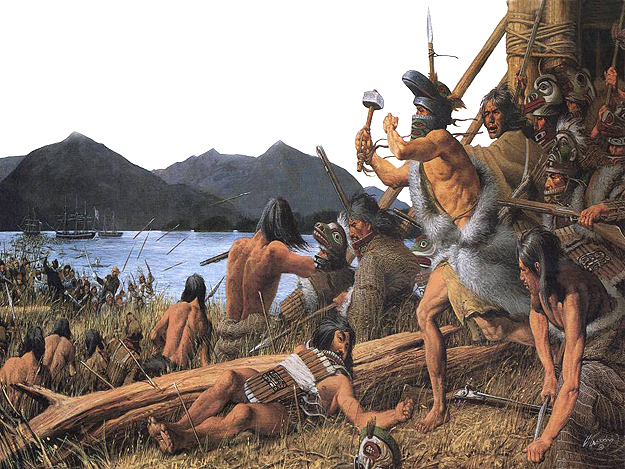
Back in 1799 Emperor Paul ordered the founding of the Russian American-Company as Russian’s first joint-stock company which was tasked with establishing settlements and trading posts in Alaska for the fur trade. In the same year the Russian American-Company representative set up Fort Arkhangela Mikhail (Archangel Michael’s Fort) near the modern day Alaskan city of Sitka, however in 1802 the native Tinglit people destroyed the settlement. In response to this, the Battle of Sitka was fought in 1804 between the Russian settlers and the native people, where the Russians unsurprisingly enjoyed a decisive victory and managed to drive out the native people and establish the city of Novo-Arkhangelsk (New Arkhangelsk) which became the main city of Russian America.

From Alaska the Russians ventured south into California and in 1812 the Russian American Company established Fort Ross in California. From its American settlements, the company was able to collect valuable furs from foxes, otters, beavers and seals, but the idea of further colonisation was also considered by the company.
Battle of Austerlitz and Peace of Tilsit
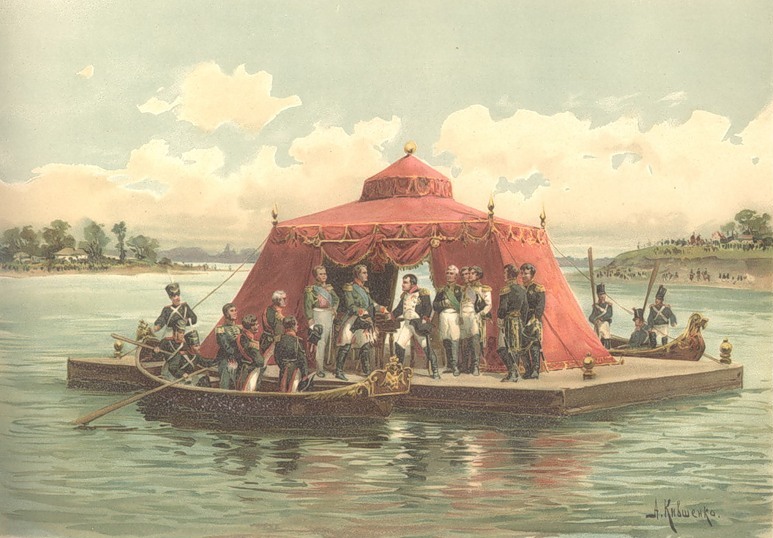
Upon becoming emperor Alexander I appreciated the threat posed to European monarchy by Napoleon and sought out allies in an attempt to counteract the rising power of France, joining the Third Coalition against France. In December 1805 the armies of Russian Empire and the Holy Roman Empire, led by Alexander I and Emperor Francis I respectively, met Napoleon and his Grande Armée at the Battle of Austerlitz (in what is now the Czech Republic), which is also known as the battle of the Three Emperors. It resulted in a decisive French victory. The defeat led to Austria making peace with France and eventually the dissolution of the Holy Roman Empire. Russia suffered a further defeat at the hands of Napoleon at the Battle of Friedland in Prussia in June 1807 and following the battle Alexander met with Napoleon at Tilsit on a raft in a river to make peace.
Finnish War
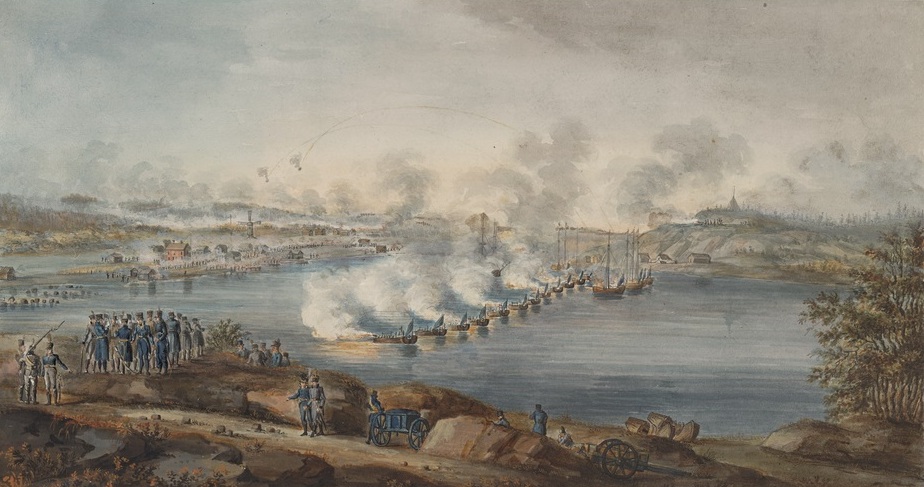
A consequence of Russia’s peace with Napoleon was hostility from those countries which still opposed him. Two such countries were the United Kingdom and Sweden. After the Royal Navy attacked Copenhagen in 1807 Russia declared war on the United Kingdom and there were naval skirmishes between the Royal Navy and the Russian fleet in the Baltic and Barents Sea. In 1808, when Sweden refused to follow Napoleon’s Continental System, Russia occupied Finland which was then part of Sweden and the Finnish War broke out between the two countries. The war was a success for Russia and when peace was made in 1809, Finland was incorporated into Russia as the Grand Duchy of Finland. King Gustav IV Adolf was subsequently forced to abdicate as king of Sweden due to the loss.
Napoleon’s Invasion
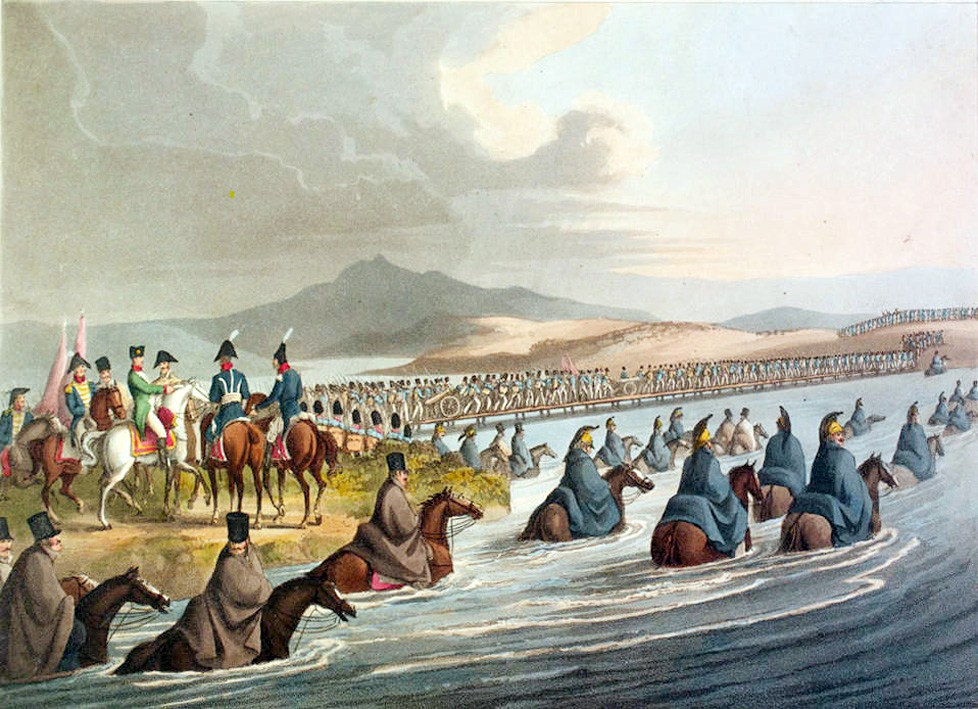
The peace with France was always fragile and it finally collapsed in 1812. Napoleon’s decision to invade Russia came after Russia reopened trade with the United Kingdom in 1810. Napoleon also intended to reestablish a Polish state. On 24 June 1812 the Grande Armée entered Russian Poland upon crossing the River Neman marking the border between Prussia and the Russian Empire. The Grande Armée met little resistance and the few military engagements which did take place ended with a Russian retreat.
Battle of Smolensk
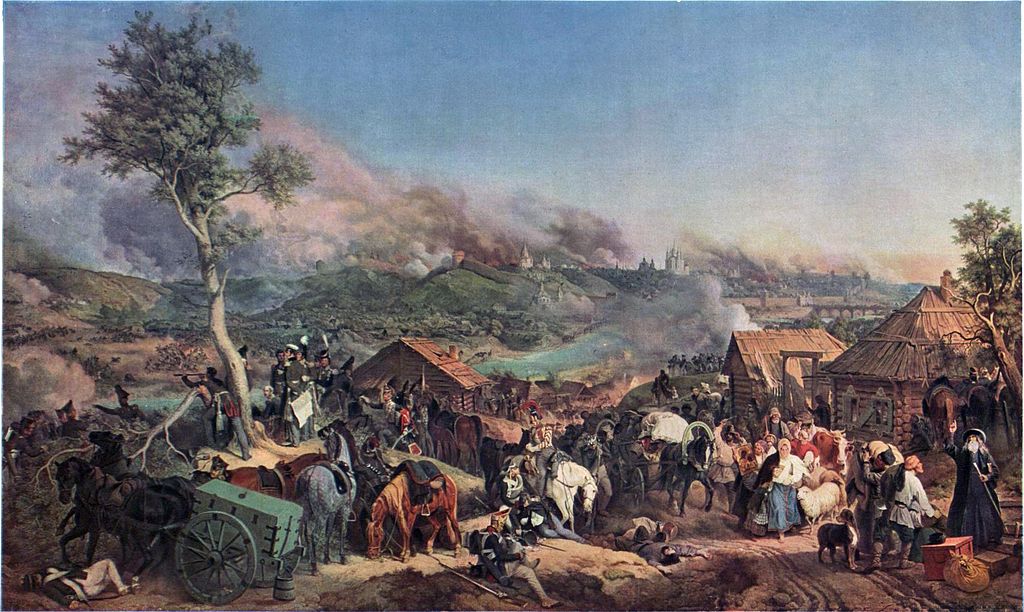
By July 1812 the Grande Armée was in Vitebsk and by August 1812 it has crossed the River Dnieper and was in Russia proper outside the city of Smolensk, where the Russian troops of General Pyotr Bagration were garrisoned. Subsequently the main Russian force lead by General Michael Barclay de Tolly – the supreme commander – also arrived at the city. It was in Smolensk that the first major battle of the war took place. Napoleon expected the Russian army to stand and fight to protect the strategically and historically important city of Smolensk, which in turn would lead to the destruction of the Russian army leading the road to Moscow and St Petersburg open. The Russians at first did attempt to defend the city, but eventually Barclay de Tolly decided that it was more important to save the Russian army than Smolensk and ordered the city be abandoned. The city’s kremlin was eventually breached and the city fell and was practically destroyed in the process. On the retreat the Russian army destroyed all potential supplies so they would not fall into the hands of the French.
Battle of Borodino

At the time, Barclay de Tolly’s scorched earth tactics, the loss of the holy city of Smolensk and the constant retreat caused despair and severe loss of morale for the Russians. Many were critical of Barclay de Tolly and his foreign name did him no favours. After the fall of Smolensk, supreme command was handed to General Mikhail Kutuzov, who despite being in his sixties and overweight, proved to be an instant morale booster. Kutuzov knew than it would be too much to let Moscow fall without a fight and so prepared the Russian army to meet Napoleon in battle.
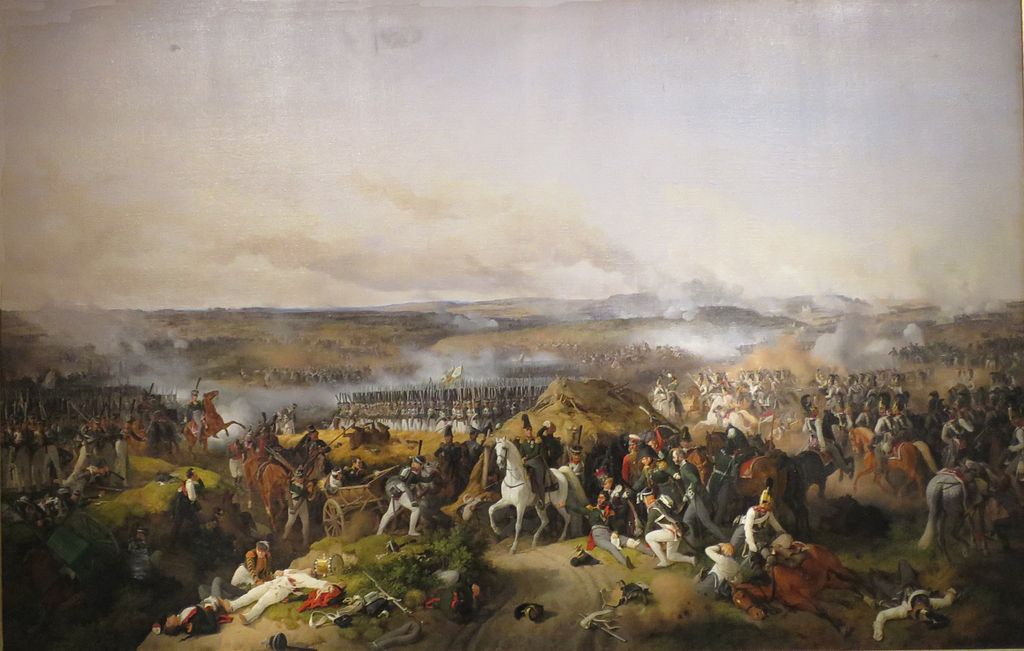
The two armies of France and Russia met in September 1812 in the village of Borodino, just outside Mozhaisk on the approach to Moscow. The Battle of Borodino is described as one of the greatest battles in the whole of history, with almost a quarter of a million men taking part and around a third of that number being killed or wounded. The battle nevertheless proved inconclusive and both armies suffered heavy losses. It can be claimed as a French victory as the Russians retreated, however Kutuzov knew that as long as the Russian army was saved from total destruction it would be able to recover with new recruits. Napoleon had no such opportunity.
Capture of Moscow

After Borodino, Napoleon headed straight for Moscow and at a meeting on the outskirts of the old capital in Fili, Kutuzov held a meeting where it was decided to continue the scorched earth policies of Barclay de Tolly and abandon Moscow.
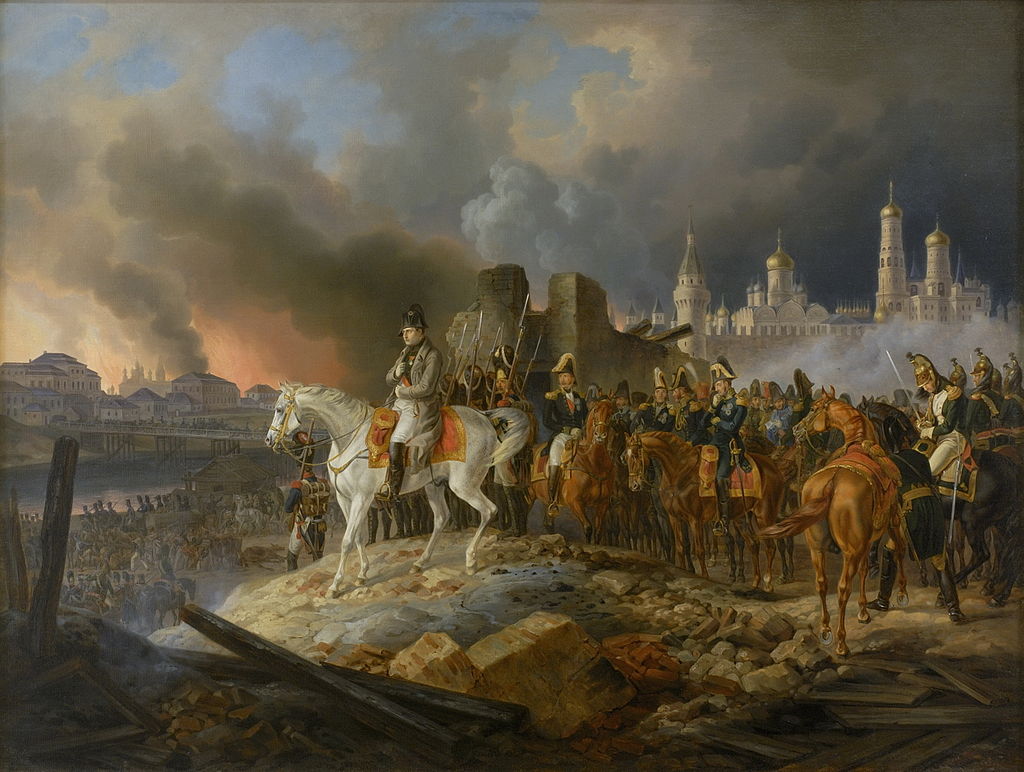
Napoleon arrived in the city a week after Borodino and waited to be met to be handed the city, he could not believe that the Russians would abandon Moscow – the spiritual capital of the country. But not only did they abandon it, they cleared it of supplies and set it alight thus denying the already exhausted and famished enemy supplies.
Battle of Maloyaroslavets
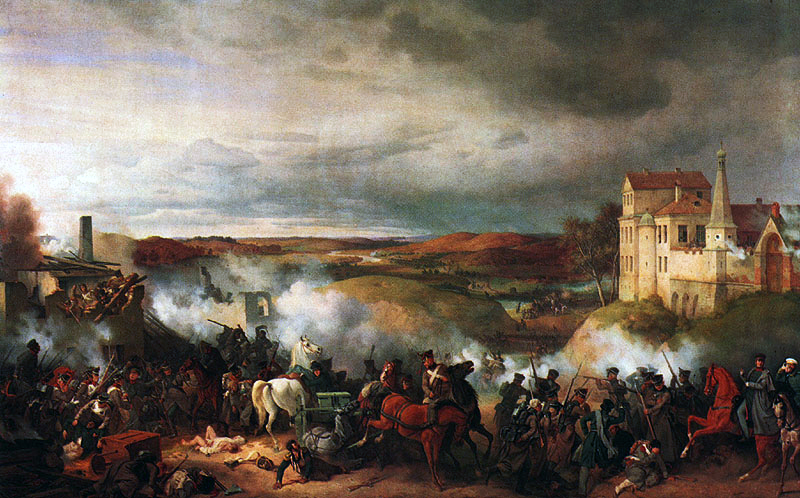
By October 1812 with winter approaching, Napoleon realised that he had no hope but to retreat from Moscow to save his army from starvation and exposure. He also knew that to return the way he came would mean destruction as the Russians had already destroyed all supplies on that route. Therefore Napoleon decided to take the route via Kaluga back where he could find supplies for his army. The Russians though also understood this and Kutuzov and his army were already in Kaluga awaiting Napoleon. In the end of October Russian troops led by General Dmitry Dokhturov met the Grande Armée in Maloyaroslavets on the approach to Kaluga. The Grande Armée was again victorious and the Russians once again retreated, but Napoleon knew that his army would be destroyed if he continued to head for Kaluga and there was no option but to take the Smolensk route back, despite the lack of supplies.
Napoleon’s Retreat
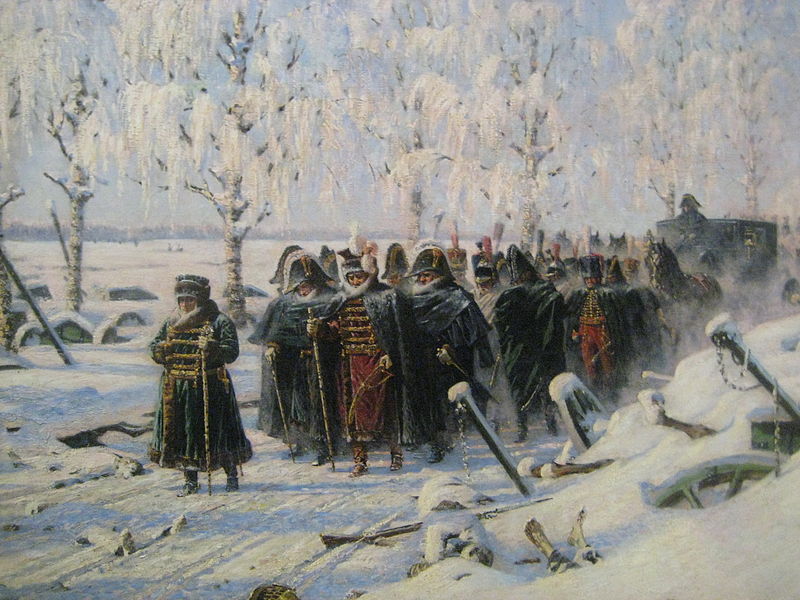
As it retreated, the remnants of the Grande Armée grew smaller and smaller as hunger, the winter and Russian attacks took their toll. In December 1812 Napoleon abandoned his army and in total only a small portion of the once Grande Armée made it back alive. Napoleon’s dreams of conquering Russia were over. In Russian history the war is remembered as the Patriotic War. Kutuzov died in 1813 and is remembered as a hero and a saviour of Russia. However the scorched earth tactics of Barclay de Tolly, which were unpopular at the time, were also credited with saving Russia and would be repeated in the 20th century against a new invader.
Reforms of Alexander
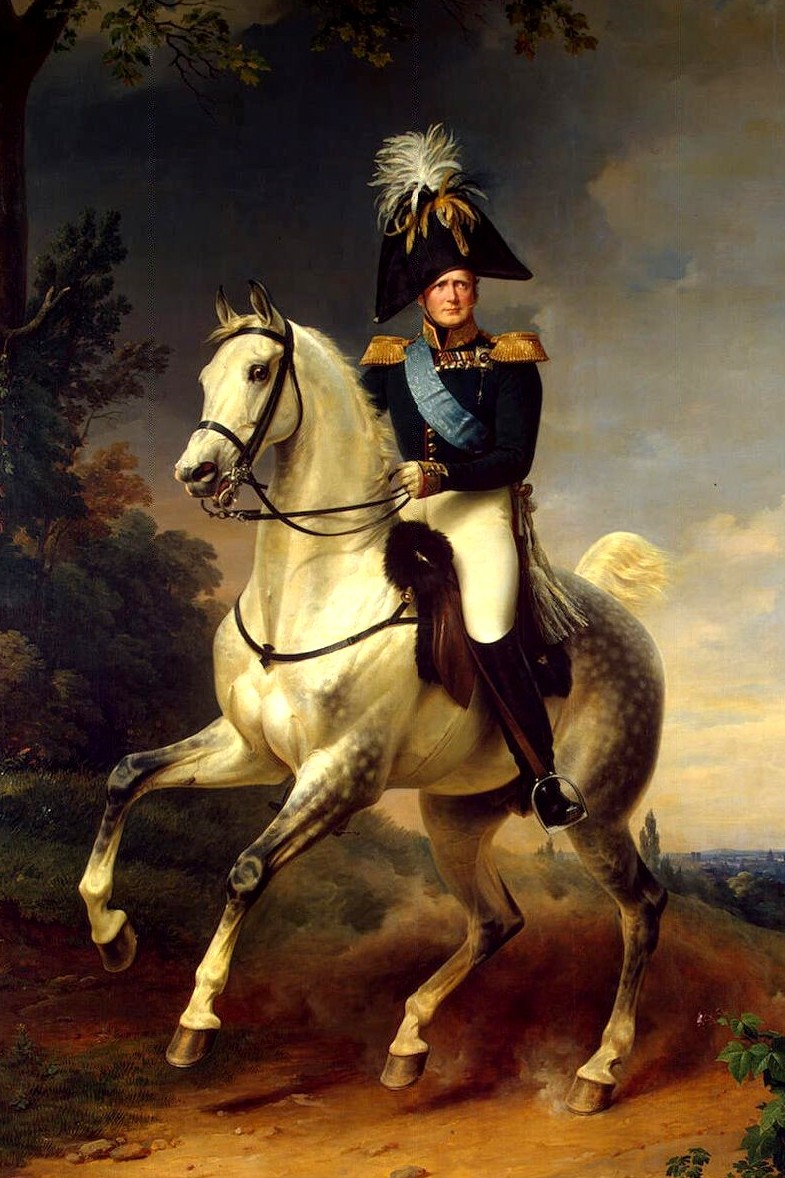
After the French threat was eradicated, Emperor Alexander I returned to his plans to reform Russia. Alexander, like his grandmother, was known for his liberal views and he toyed with the idea of emancipating the serfs and adopting a constitution for Russia. However these plans were fiercely opposed by the elite and Alexander too eventually lost his appetite for this, feeling that Russian society was not yet ready for emancipation and a constitution.
Death of Alexander
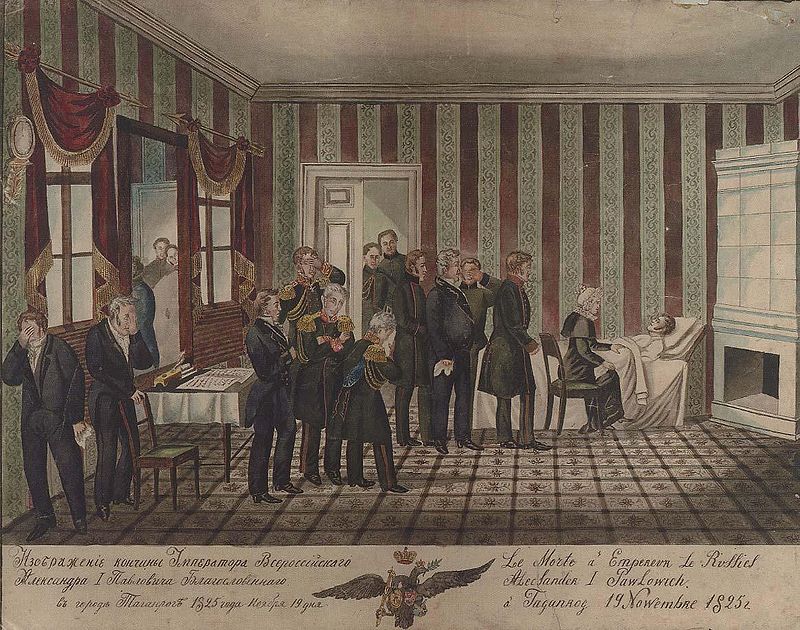
Alexander’s reign ended suddenly with his unexpected death in November 1825. At the time he was in the city of Taganrog as he had gone south where the climate was beneficial in treating his wife’s ill health. The death was so sudden that there has since been rumours that the emperor in fact faked his own death and actually became a monk in Tomsk. Since he had no sons, another consequence was that he had not prepared an heir.
Decembrist Revolt
Alexander’s eldest brother was Konstantin Pavlovich, who was governor of Poland at the time, and the royal guard swore allegiance to him. However Konstantin had no intention of becoming emperor and immediately refused in favour of his younger brother Nikolai Pavlovich (who become Emperor Nicholas I). In the confusion a group of liberal noblemen saw an opportunity to act to achieve their dream of a constitution for Russia and the emancipation of the serfs. As the events took place in December 1825 this group of conspirators has become known as the Decembrists.
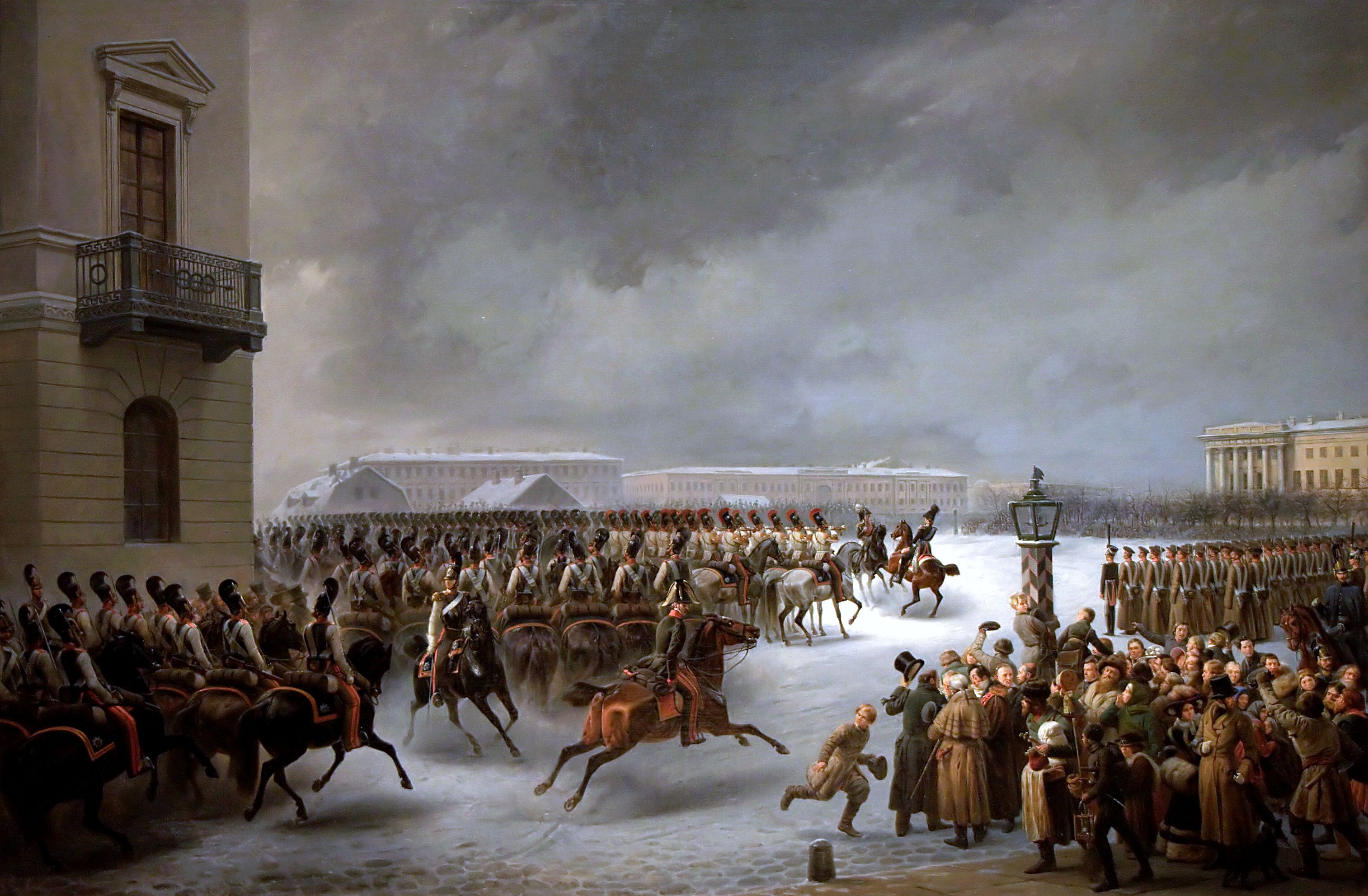
The Decembrists managed to persuade a group of officers not to swear allegiance to Nicholas I which when the allegiance ceremony was held on Senatskaya Ploschad (Senate Square) in St Petersburg. The original plan was supposed to see other troops supporting the Decembrists and the rebel leader Prince Sergey Trubetskoy being named an interim dictator. However Trubetskoy had second thoughts and did not go to Senatskaya Ploschad and only 3,000 troops gave their support to the Decembrists while 9,000 remained loyal. Nevertheless an envoy of Nicholas was subsequently shot dead and the rebels launched a failed attempt to seize the Winter Palace. The revolt was finally quashed when Nicholas ordered to fire on the rebels with artillery.
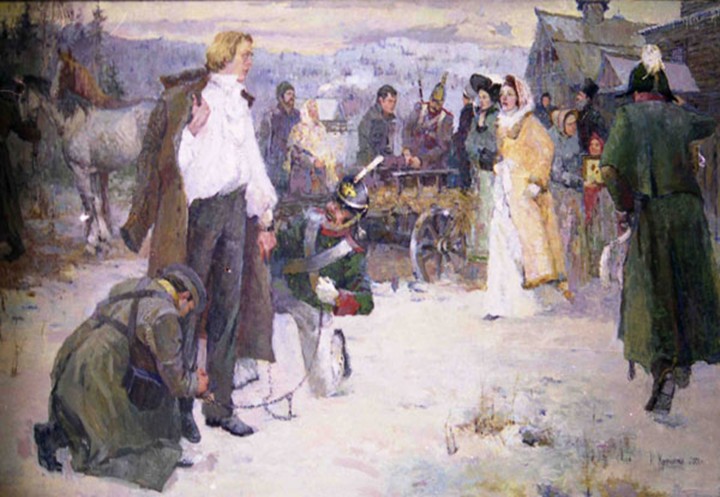
The rebels fled but were eventually rounded up and arrested. Five of the more radical leaders were hanged, despite the ropes of the gallows breaking on the first attempt. Other leaders, including Trubetskoy, were exiled to Siberia. The Decembrists are now remembered affectionately as people who gave up everything, and these were people from the elite who had a lot to lose, in attempt to benefit their country and the poorest of their countrymen. Another aspect of the events which has been especially celebrated in Russian literature and art is the fate of the wives of the Decembrists who also gave up everything to travel with their husbands into exile in Siberia.
The Iron Tsar
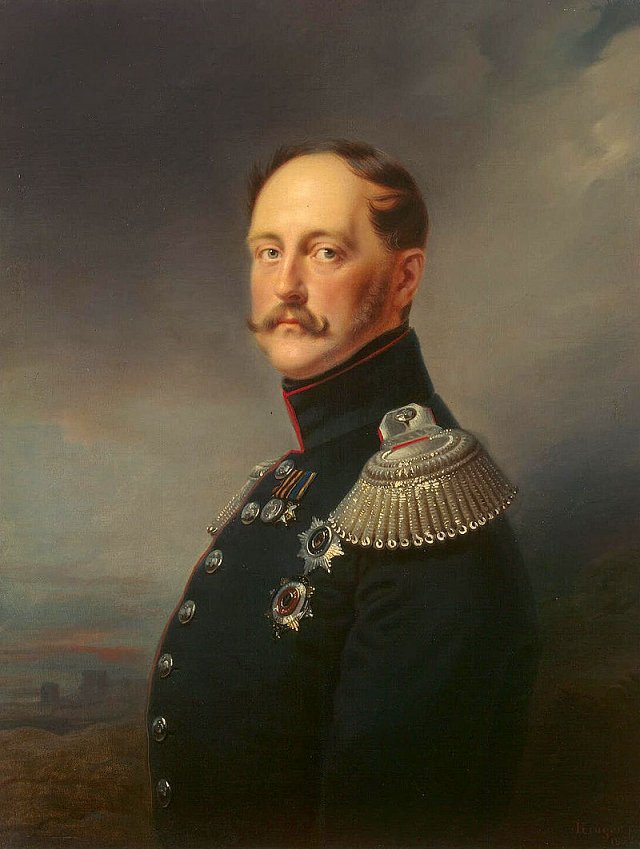
Nicholas I’s reign was characterised by his reactionary policies, aggressive foreign policy and domestic repression which earned him the sobriquet of ‘The Iron Tsar’. He liked to dress as a soldier and was obsessed with detail, sharing his father’s passion for military parades. In 1830 and 1831 an armed uprising in Poland was crushed by the Russian Army and Nicholas decreed that Poland was now an integral part of the Russian Empire. Despite this reputation Nicholas disliked the concept of serfdom and would have seen it abolished but for the fear of a revolt from the aristocracy. He nevertheless did make improvements for the benefit of state-owned ‘crown serfs’.
First Railways
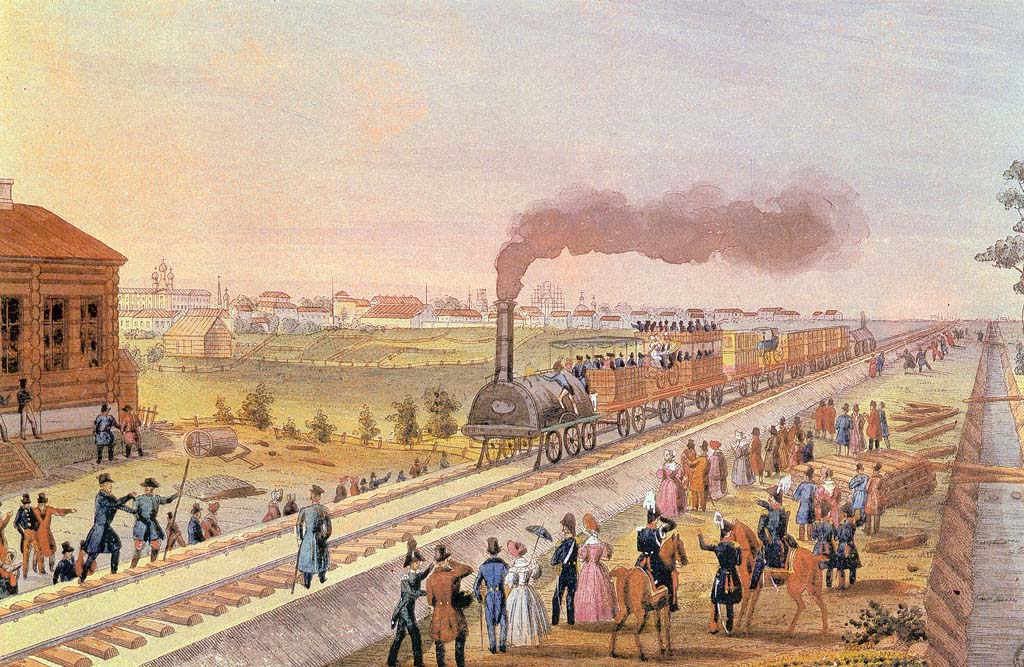
Nicholas I’s reign also saw the laying of the first railways in Russia. The first railway line was just 17km and was opened in 1837 between St Petersburg and the imperial palace in Tsarskoe Selo. This was followed by the more large-scale and public project of the St Petersburg to Moscow line which was built between 1842 and 1851. It is often said that a bump on what is otherwise a straight line from St Petersburg to Moscow was due to the fact that Nicholas accidently drew around his thumb using a ruler on the map when suggesting the route and the engineers were too afraid not to follow his orders. Like many quirky stories of this sort, it is just an urban myth – the curve is to avoid a steep gradient. In any case the project proved a great success and by the end of the century over 19,000 miles of track had been laid.
Golden Age of Russian Literature
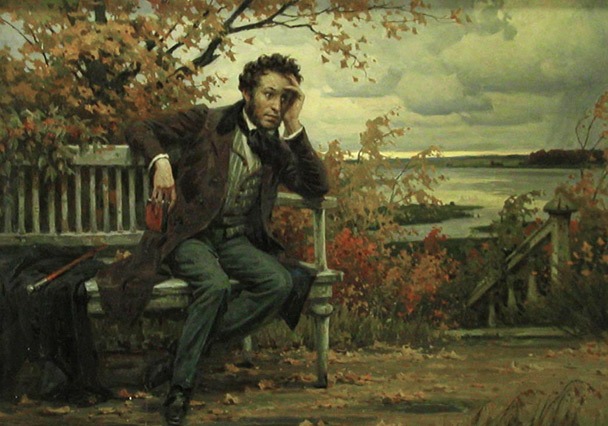
Despite the repression of Nicholas’ reign, or perhaps precisely in reaction to it, Russia during this period experienced what is described as the golden age of literature and the arts. The prominent writer and poet of this era (and in fact of Russian literature in general) was Aleksandr Pushkin. Not only did Pushkin write about ordinary Russians and Russian themes, he also wrote in Russian. In fact he is considered to have created the Russian literary language, at a time when the court tended to use French – Russian was left to the peasants. Pushkin’s writings and his links with the Decembrists eventually earned him exile to his country estates. Among other famous writers of this time were Nikolai Gogol, Ivan Turgenev and Mikhail Lermontov, who paved the way later for Lev Tolstoy, Fyodor Dostoevsky and Anton Chekhov. What Pushkin did for Russian literature, Mikhail Glinka did for Russian classical music, being the first to write compositions on Russian themes, with a distinctive Russian flavour.
Further Expansion into the Caucasus
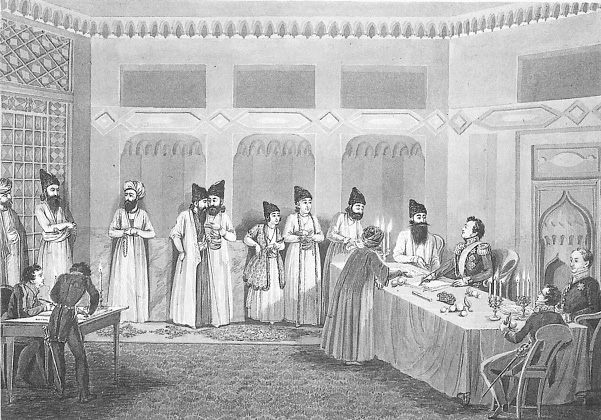
In the 1826 Russia once again went to war against Persia which ended in 1828 in favour of Russia and a peace treaty which saw Russia take control of more of Persia’s territories in the Caucasus including the remaining parts of modern day Azerbaijan and Armenia. This war was followed by war with the Ottoman Empire which also ended with a Russian victory. The 1829 peace treaty gave Russia control of the Black Sea coast up until the Danube.
Crimean War
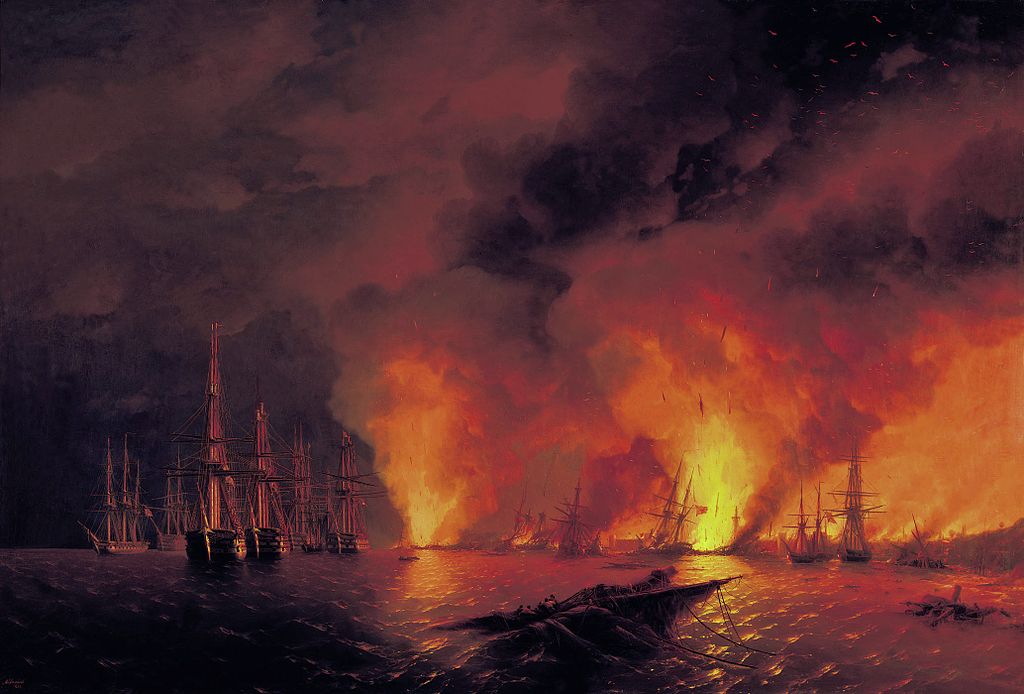
In the 1850s the Ottoman Empire had become so weakened that France and Britain were extremely worried that Russia would be the main benefactor of the Ottoman decline and would be able to implement the plan of Catherine the Great and spread southwards. In 1852 France was able to pressure the Ottoman sultan into naming France as the supreme authority over Christian sites in the Holy Land, a title which Russia had held since the 18th century. Russia sent a mission to the sultan in reaction to this and when the mission failed it invaded the Ottoman Danubian territories in July 1853. The sultan promptly declared war on Russia and French and British fleets entered the Dardanelles. In November 1853 the Russian fleet destroyed Ottoman ships anchored in harbour at the Battle of Sinop and this action resulted in France and Britain declaring war on Russia.
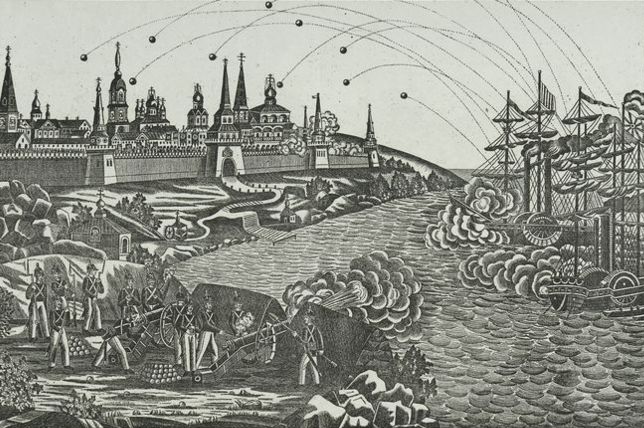
The subsequent war involved several theatres: the Danube, the Black Sea, the Caucasus, the White Sea (with the Royal Navy bombarding Solovetsky Monastery), the Azov Sea, the Baltic Sea (including an Anglo-French attempt to attack the Russian fleet in Krondstadt) and the Pacific Ocean (with the Anglo-French siege of Petropavlovsk-Kamchatsky and an attempt to land in Kamchatka and Sakhalin).

However as its name suggest the war was mostly fought on the Crimean Peninsula. The Crimean port of Sevastopol was besieged by the British, French and Turkish from 1854 to 1855. As part of the siege was the Battle of Balaklava of October 1854 famous for the ill-fated Charge of the Light Brigade where British cavalry made a disastrous direct frontal assault on Russian artillery battery resulting in heavy losses.
Amur Acquisition
In 1848 the Russian navigator Gennady Nevelskoy led an expedition to the Russian East around the Amur River and Sakhalin, which his expedition proved was an island. In 1855 Russia signed the Treaty of Shimoda with Japan allowing them to settle in the north of the island, while the Japanese took the south. In 1850 Nevelskoy founded the Nikolaevsky Post (named in honour of Emperor Nicholas I) in the Amur estuary, which after the Crimean War became the main Russian centre on the pacific and in 1856 was granted city status and renamed Nikolaevsk-on-Amur.
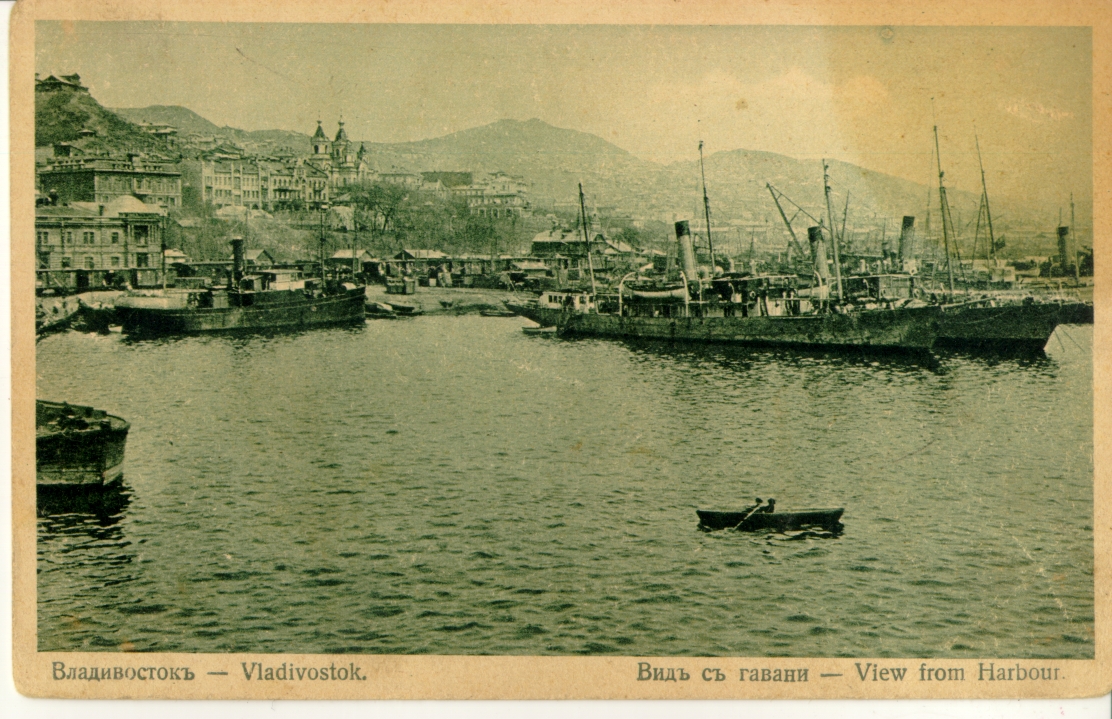
In 1854 Nikolai Muravev, the governor-general of East Siberia, went with a Transbaikalian Cossack Host to further explore the Amur Region. In the subsequent years Russian settlers were sent to the region. Muravev was also responsible for the Treaty of Aigun signed in 1858 between the Russian and Chinese Empires which saw Russia occupying the territory north of the River Amur and east of the River Ussuri; this understanding was confirmed in the Treaties of Peking in 1860. In 1858 the military post of Khabarovka (today’s Khabarovsk) was founded closed to where the 17th century Cossack explorer Yerofey Khabarov had his winter camp. In June 1860 the supply ship Manchur arrived on the Golden Horn Bay and founded an outpost named Vladivostok – Russian for ‘Lord of the East’.
Death of Nicholas I
In February 1855 Emperor Nicholas I died after contracting pneumonia in Crimea inspecting the troops. Nicholas was succeeded by his eldest son Aleksandr who became Emperor Alexander II. Unlike his father, Alexander II was a liberal and was intent on bringing in a period of reform for Russia, but his first task was seeking an end to the costly Crimean War.
End of the Crimean War

Despite the heroism of the Russian defenders, in August 1855, after the sixth bombardment, Sevastopol fell. A young writer by the name of Lev Tolstoy witnessed these events and wrote about them in three short stories known as the Sevastopol Sketches. Russia saw more success in Taganrog in August 1855 when the Anglo-French siege ended without the city falling and at the battle of Kars in June 1855 where Russian troops captured a strategic Turkish fortress.
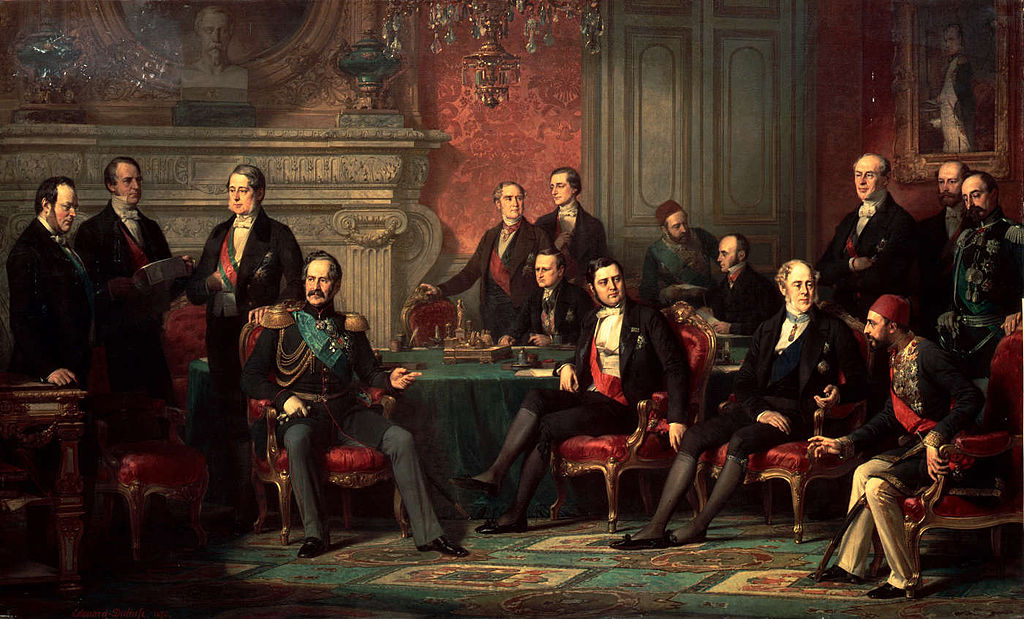
However, the fall of Sevastopol, the death of Emperor Nicholas I and the growing British and French public discontent at the high casualty rates decreased all zeal to continue the war among all parties and in March 1856 the Treaty of Paris was signed ending the Crimean War. As a term of the treaty Russia returned all territories won from the Ottoman empire, while Crimea was returned to Russia. However both the Ottoman Empire and Russia were barred from keeping a navy in the Black Sea.
Emancipation of the Serfs
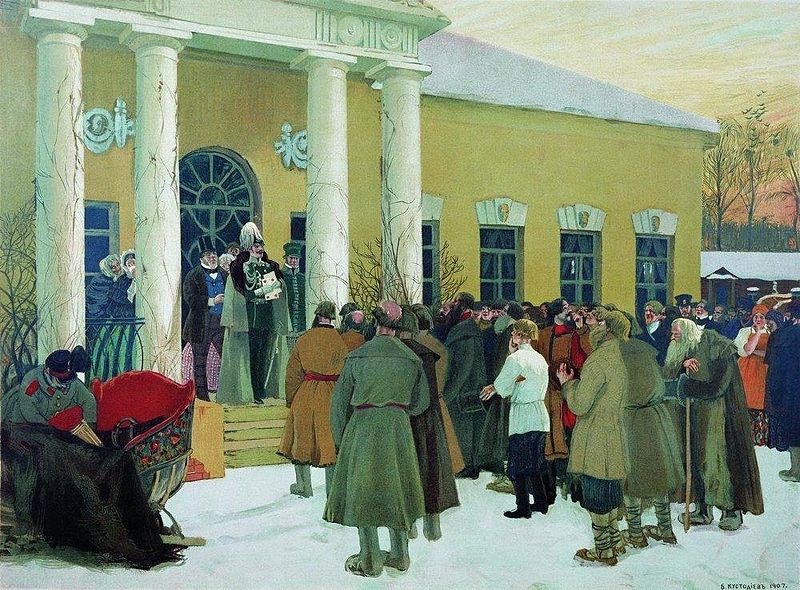
Like his father, uncle and great-grandmother, Alexander II knew that Russia would never develop as a modern country while the majority of the subjects in European Russia were enslaved as serfs. However unlike his predecessors Alexander had the conviction to impement his plan despite the protests of the nobles, arguing his intention by saying that it is best that reform came from above rather than below after a mass serf rebellion. Serfdom committees were formed to discuss the best solution to the issue. In the end it was agreed that the serfs would be liberated and given loans to buy land from their former masters. The formal emancipation law was signed in March 1861 ending centuries of serfdom and earning Alexander the sobriquet of ‘The Liberator’. However the new situation was far from perfect as the former serfs were still economically dependent on their former masters and were often given the poorest parts of the land and not permitted to sell it.
Caucasian War: Murid War
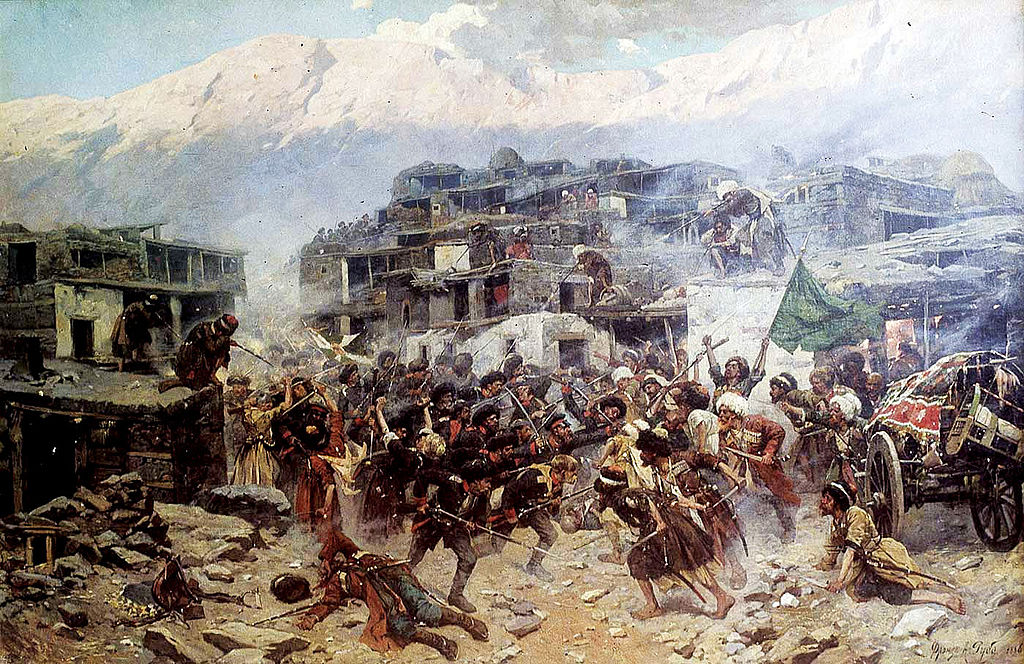
Since 1817 the Russians had been applying efforts to subjugate the people of the North Caucasus and this process gained further impetus after the victories against the Ottoman Empire and Persia in the late 1820s. This long-drawn out conflict is known as the Caucasian War, but in realities it consists of several periods of warfare and two main theatres: the eastern and the western parts of the North Caucasus. During the reign of Alexander II the war reached its climax.
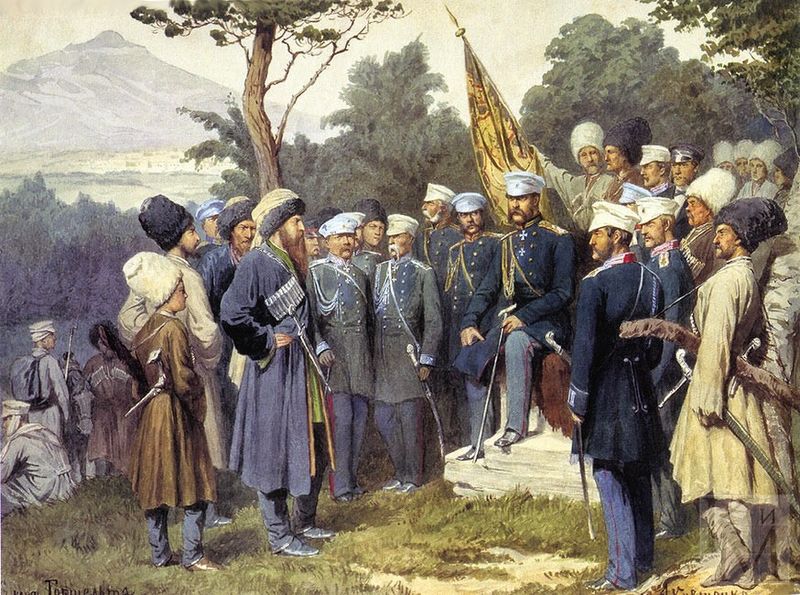
In the eastern part of the North Caucasus the conflict became known as the Murid War and the various peoples were able to unite against the Russian invasion under a common Islamic faith. 1828 saw the establishment of the Caucasian Imamate and in 1834 Imam Shamil became the third imam of the state. It was under Shamil that the imamate was at its strongest and most united. Shamil employed the use of guerilla tactics against the Russians who were totally unprepared for such type of warfare. He also made a name for himself for his heroism and ability to escape against all odds. However it was not enough to stand up against the might of the Russian army forever and in 1859 Shamil was captured. In return for recognising Russian rule, he was allowed to settle with his family in Kaluga, before moving to Kiev were the warmer climate was more to his liking. He eventually died in 1871 on pilgrimage in Medina.
Caucasian War: Russo-Circassian War
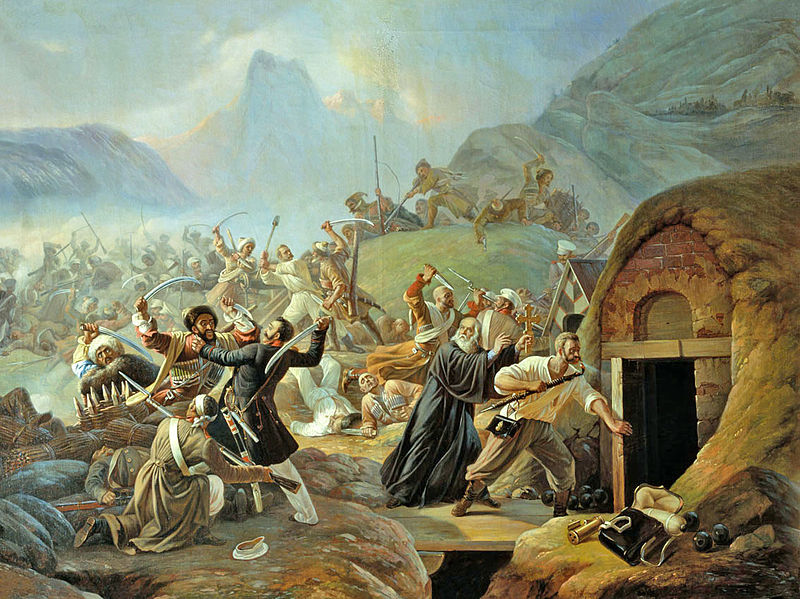
The war involving specifically the east of the North Caucasus is also known as the Russo-Circassian War. Russia had been encroaching into Circassian (also known as Adyghe) lands since the time of Peter the Great and under Nicholas I fortresses were built on the Black sea coast in the 1830s which later served as strongholds. Once such fortress was established in 1838 on the site of modern day Sochi.
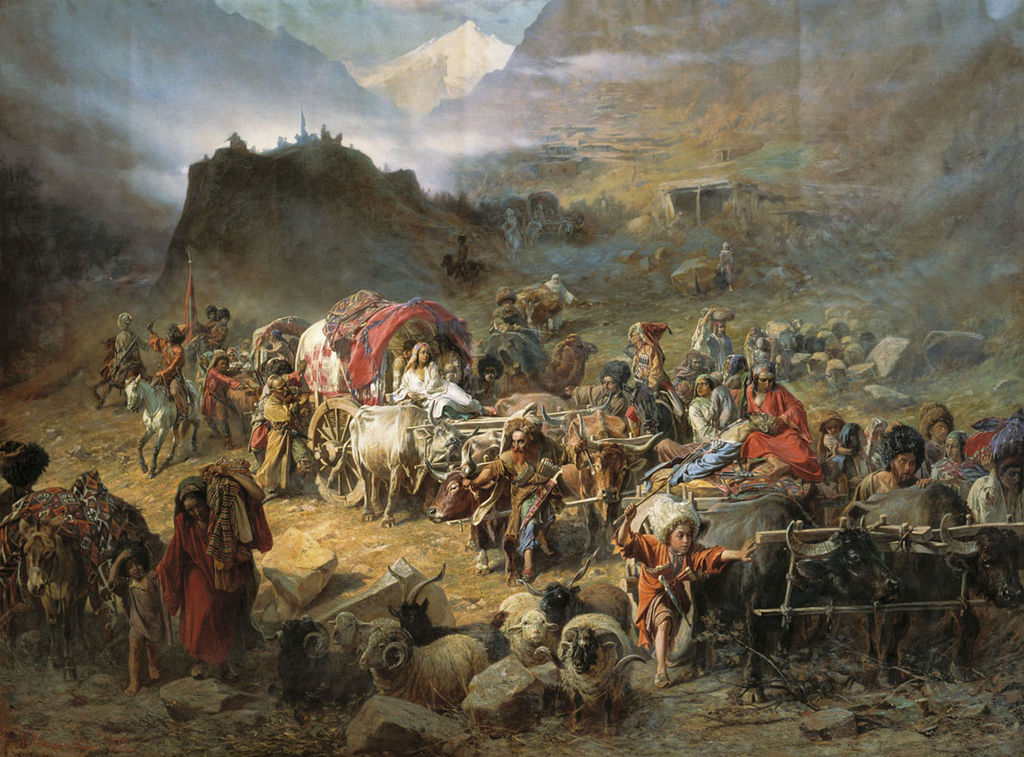
After the capture of Imam Shamil Russian troops were freed up which were then transferred to the eastern theatre, where by 1859 the Russians were also successful in establishing control and obtaining oaths of loyalty from Circassian leaders. Those who refused instead were forced to flee to the Ottoman Empire with thousands dying on the route – an event which has since been described by some as an act of ethnic cleansing or genocide. In 1864 Emperor Alexander III declared the end of the Caucasian War and the conquest of the whole of the Caucasus.
Conquest of Turkestan
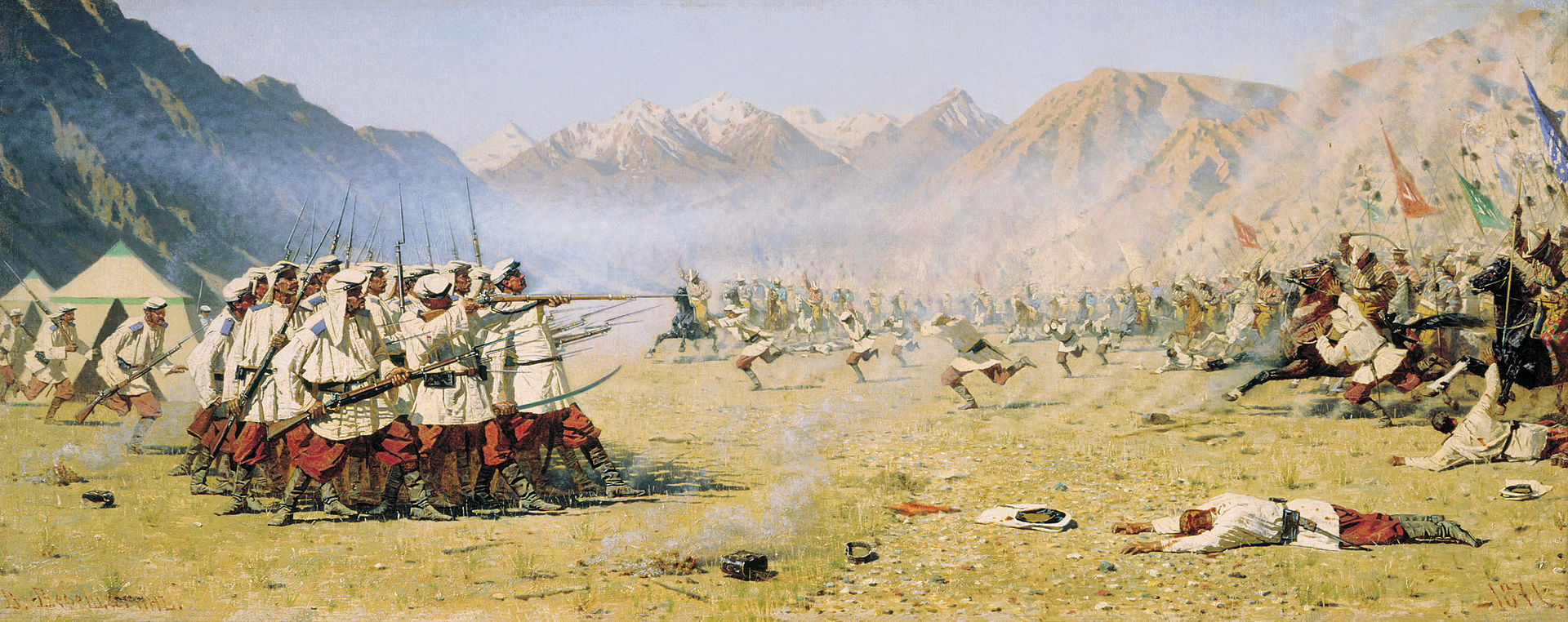
After its success in the Caucasus, Russia turned its attention to lands in Central Asia which, despite not being a single national state, were then referred to as Turkestan (modern day Kazakhstan, Kyrgyzstan, Turkmenistan and Uzbekistan). These events are part of what is known as the Great Game, which pitted Britain against Russia, as it feared Russian expansion towards India. In 1865 Russian forces captured Tashkent; this was followed in 1868 with the remainder of the Koqand Khanate becoming a protectorate of Russia. The new territory was officially incorporated into the Empire in 1867 as the Turkestan Governorate-General.
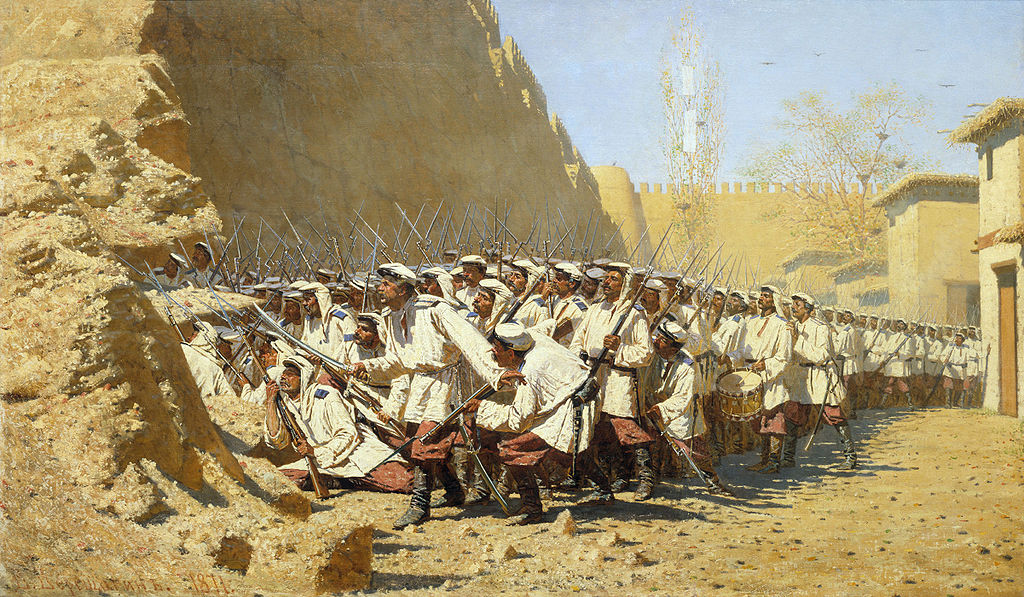
In 1868 Russia captured the important city of Samarkand from the Bukhara Emirate in the east of the region and in 1873 both the Bukhara Emirate and the Khiva Emirate accepted Russian suzerainty and became protectorates. Finally in 1876 the Koqand Khanate was abolished and incorporated into Russian Turkestan. The Russian conquest of Turkestan was complete.
Alaska Purchase
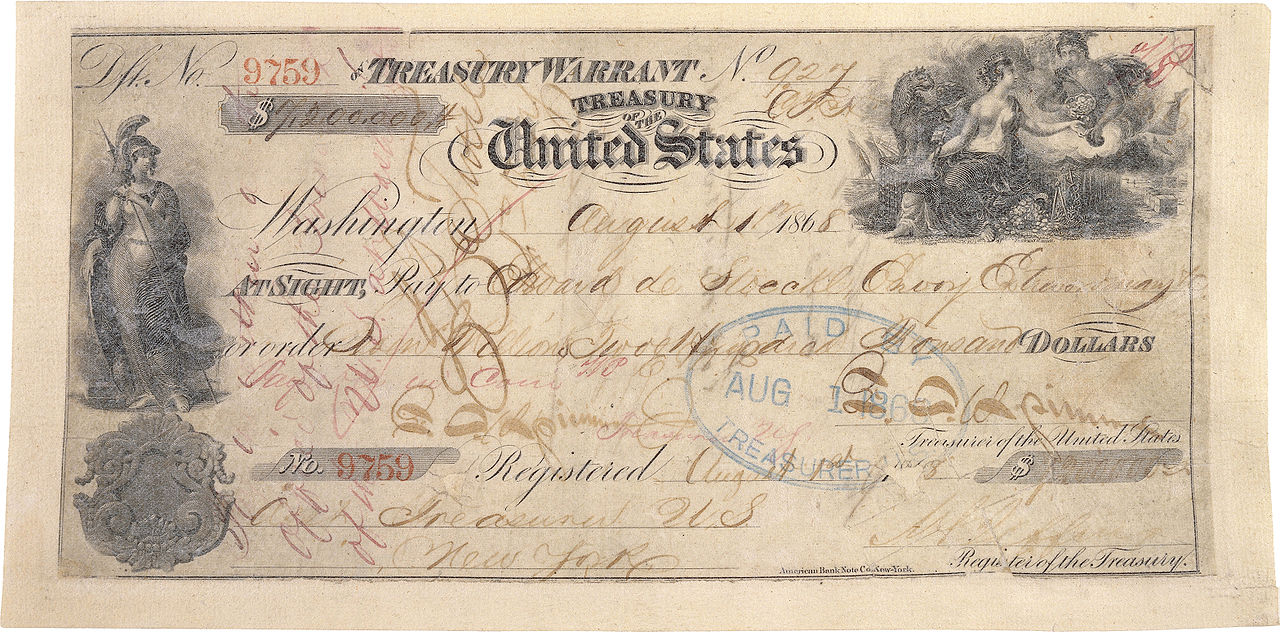
By the 1860s the Alaskan colonies were becoming more hassle than their worth due to overhunting, competition from the British and Americans and the very distance of the colonies. Back in 1849 Fort Ross in California was sold as it was no longer needed to supply the Alaskan colonies and in 1867 it was decided to sell Alaska to the United States for $7.2 million. The native Tlingit people did argue that the land was never the Russians to sell in the first place, but to little effect. The end of Russian’s American colonies consequently led to the liquidation of the Russian-America Company.
Assassination of Emperor Alexander II
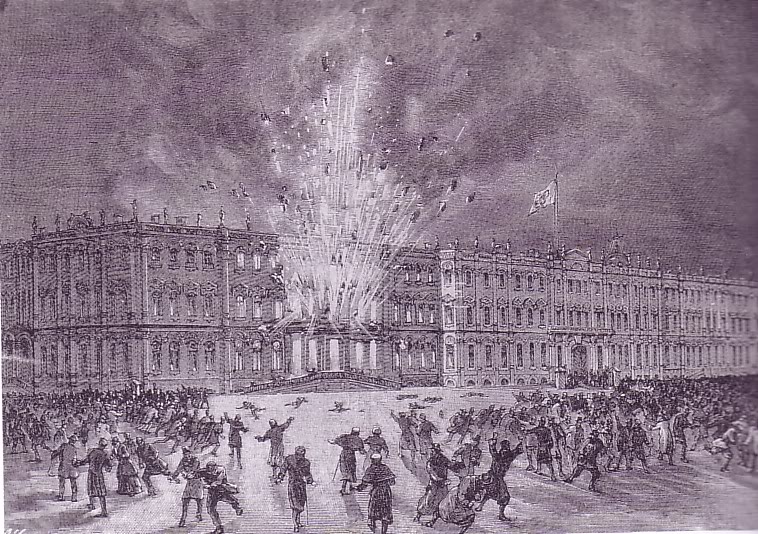
The emancipation of the serfs did not bring an end to the revolutionary mood existing in Russia at a time when democratic and republic revolutions were taking place in Europe. Despite seeing the emancipation of the serfs, the revolutionaries still demanded a constitution for Russia and the improvement of the lot of workers and peasants. In 1866 the first attempt on the life of the emperor was made by a revolutionary. In 1867 there was an attempt to shot the emperor in Paris and then another attempt in St Petersburg in 1879. In the same year the revolutionary group Narodnaya Volya (People’s Will) was formed and were able to blow up a wagon of his train, but the emperor was unharmed. In 1880 Narodnaya Volya were able to plant a bomb in the Winter Palace itself killing 11 security guards but again missing the emperor.
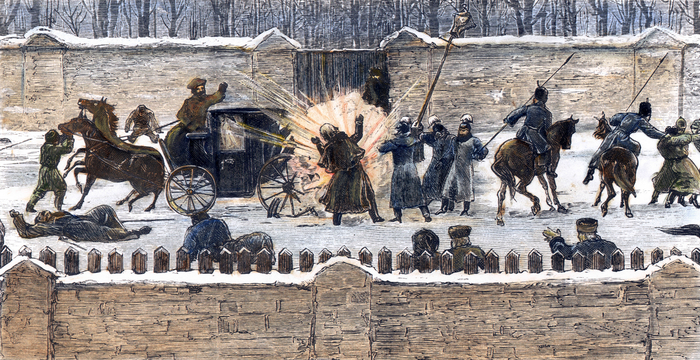
The emperor had been lucky on all previous attempts but Narodnaya Volya only had to be lucky once and this day came in March 1881. When returning home from a military roll call a member of Narodnaya Volya threw a bomb at the emperor’s carriage killing one of the emperor’s Cossack guard. Alexander then made the fatal mistake of emerging from the bulletproof carriage where there was another member of Narodnaya Volya in the crowd also armed with a bomb. Ignacy Hryniewiecki – a young Polish revolutionary – throw his bomb fatally wounding the emperor. Alexander II was taken back to the Winter Palace where he died from his wounds.
Reign of Emperor Alexander III
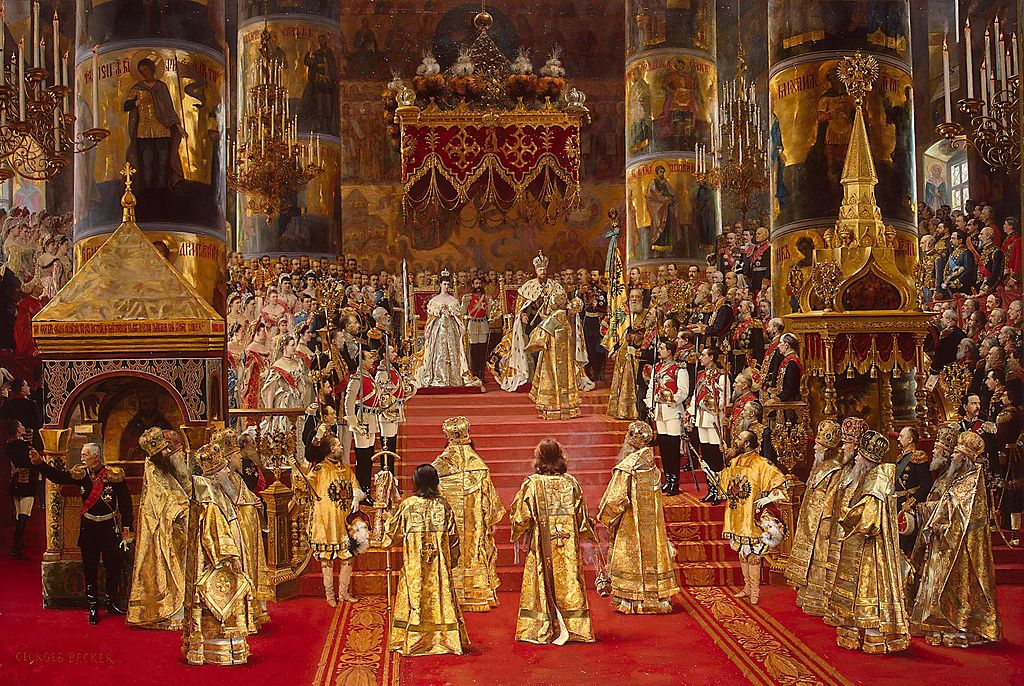
The revolutionaries hoped that the assassination would create a revolution in Russia, however in fact they had just killed the most liberal ruler Russia had ever seen and one who was even considering the idea of creating a constitution. In his place Alexander was succeeded by his son Aleksandr Aleksandrovich (Emperor Alexander III). Alexander III saw the thanks his father received from his liberal policies and instead set out on a conservative policy of Orthodoxy, Autocracy and Nationality, which saw an attempt to spread Russian Orthodoxy and the Russian language across the whole empire. New laws were also introduced in 1882 putting further restrictions on Jews.
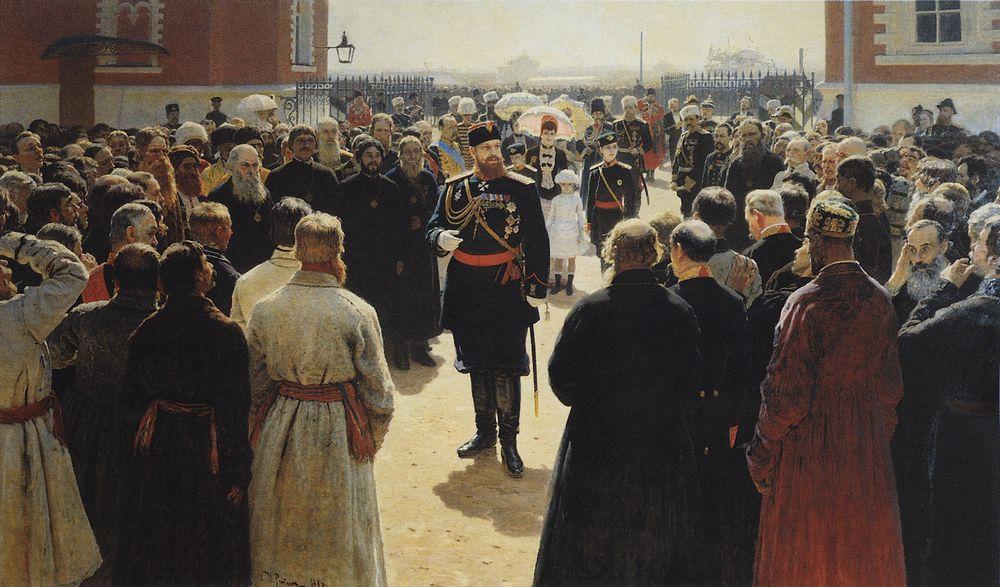
Despite his authoritarian reputation in domestic affairs, in foreign affairs Alexander III is known as the Peacemaker and is unique among Russian rulers as during his reign the Russian army took part in no major conflicts. One major aspect of his reign was entering into an alliance with France, based on his dislike of the conduct of Kaiser Wilhelm II of Germany.
Attempts on Alexander III’s Life
Spurred on by its success in killing Alexander II, Narodnaya Volya hoped to repeat it with Alexander III. Fully aware of this Alexander III moved into the Gatchina Palace outside St Petersburg with his family for security reasons. In 1887 such a plot was uncovered by the Okhrana police force and the conspirators were hanged – including a certain Aleksandr Ulyanov, whose younger brother Vladimir was deeply affected by his brother’s fate.
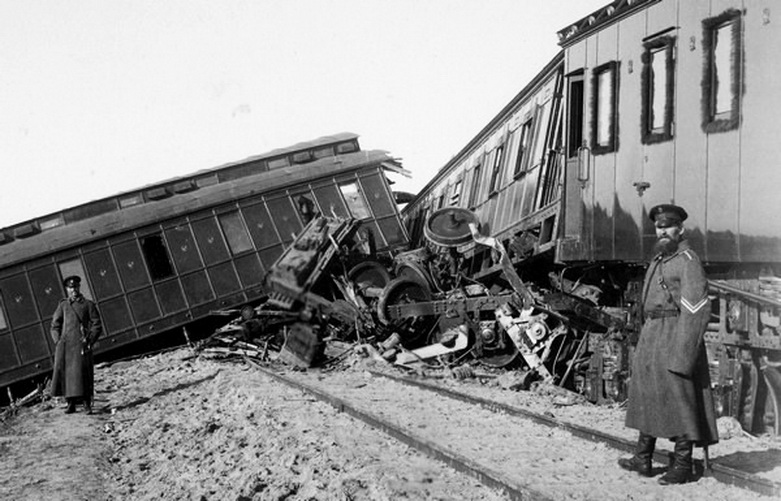
In October 1888 the train on which Alexander and his family were travelling upon returning from Crimea was bombed and derailed. Alexander though was often referred to as the ‘muzhik (peasant man) tsar’ due to his appearance and great strength and it is said that after the explosion Alexander lifted the collapsed roof of the carriage so that his family could escape. 21 people were killed, but members of the imperial family were not among the dead.
Death of Alexander III
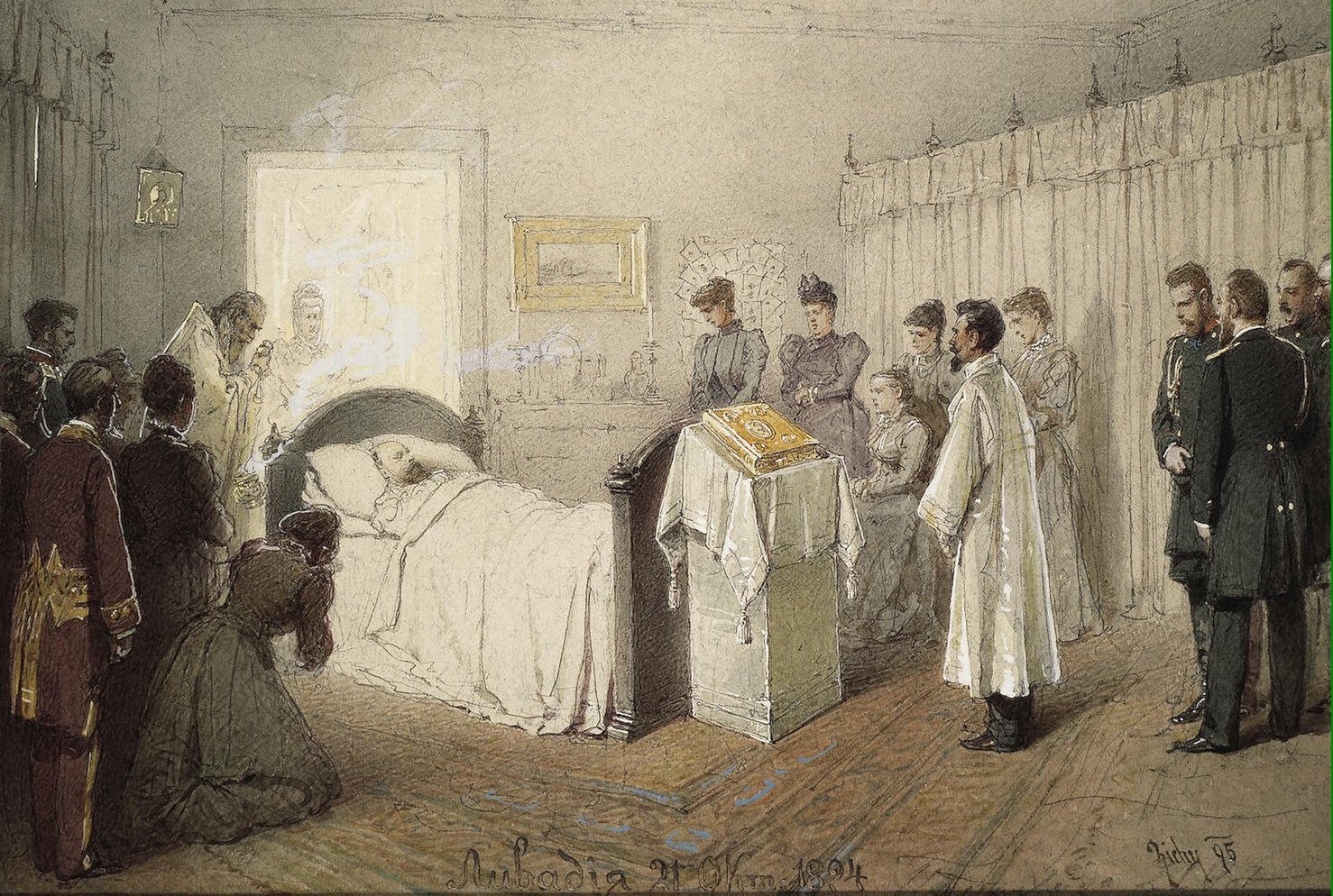
The attack on the train though is said to have helped bring about the death of the emperor of kidney failure several years later, although his appetite for alcohol probably played a role too. The emperor died among his family at their residence of the Lividia Palace outside Yalta in Crimea in 1894. At his bedside was his 26 year old son Nikolai Aleksandrovich who succeeded him as Emperor Nicholas II. Within a month of the funeral of Alexander II, Nicholas II married Princess Alix of Hesse-Darmstadt – a granddaughter of Queen Victoria of the United Kingdom – who converted to Orthodoxy and took the name Aleksandra Fyodorovna.
Khodynka Tragedy
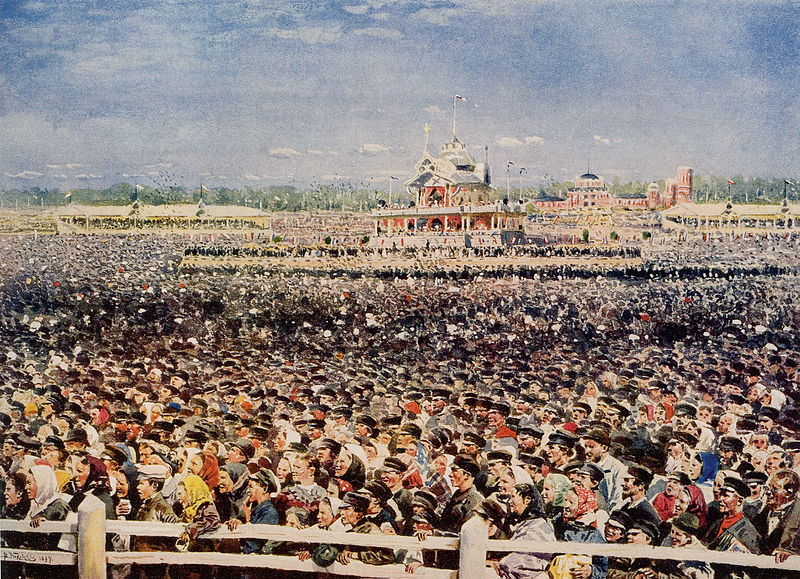
In May 1896 Nicholas II had his formally coronation in the Dormition Cathedral in the Moscow Kremlin. In celebration a festival was organised for citizens in the Khodynka Field outside Moscow. It is estimated that approximately 100,000 attended and when rumours began to spread that the free food and drink was beginning to run out the crowd rushed forward resulting in people being trampled and suffocated. It is believed that over 1,300 people died and the same amount again were injured. After the tragedy Nicholas II went ahead with a planned ball in honour of the Franco-Russian Alliance, although it is believed he was persuaded to attend so as not to upset the French guests and would have rather spent the evening in prayer. Nevertheless the attendance at the ball was seen by the people as a demonstration of the emperor’s disregard for the victims and the whole tragedy was seen as a bad omen for Nicholas’s reign.


